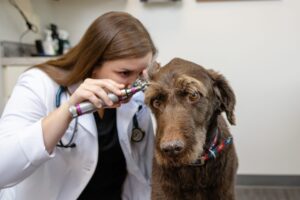The health and happiness of our pets are the most important things to us. Cats often cannot tell us when they are feeling pain or discomfort. As their caregivers, it is our job to identify the problem. Seeing the first signs of deteriorating health could save your life. This article discusses eight important warning signs that may indicate your pet has a health problem. This will help pet owners take the right steps for their furry friends.
Loss of Appetite
A loss of appetite is one of the first signs that something is wrong with your pet. Pets may occasionally miss a meal but rarely refuse food without reason. This change can have several causes, such as dental problems, stomach problems, or more serious systemic diseases. The animal should see a veterinarian right away if it refuses to eat for more than 24 to 48 hours.
Unusual weight gain or loss
Dogs and cats that suddenly lose or gain weight may have medical problems. Weight loss can be a sign of long-term conditions such as cancer, diabetes, or kidney failure. On the other hand, rapid weight gain can be a sign of hypothyroidism or overeating. Regular exams and weight checks can help detect these changes early so that immediate medical attention can be provided.
Changes in the way people behave or act
The way your pet behaves can tell you a lot about its health. If there are major changes in their daily behavior, such as becoming angrier, withdrawn, or tired, you should pay attention. For instance, a pet that is typically very active but acts very quiet and shy may be experiencing pain or discomfort and needs to see a veterinarian.
Strange odors and discharge
Unpleasant odors and discharge from your eyes, ears, nose, or other parts of your body that do not look normal and may be a sign of illness or other health problems. For example, ear infections can cause bad breath and discharge from the ears, and dental problems can cause bad breath and discharge from the mouth. You can prevent problems by watching for these signs and taking your hat to your vet as soon as possible.
Difficulty moving or limping
Any new mobility problems, such as limping, unwillingness to jump, or pain when moving, can be a sign of many health problems, such as arthritis, injury, or even a neurological condition. Paying close attention to how your pet moves and responds to exercise can tell you a lot about his health.
Persistent itching or skin changes
Repeated itching, biting, or licking of the skin, especially if it causes sores, bald spots, or irritation, can be a sign of allergies, parasites, or skin conditions. A pet’s skin and coat often indicate how healthy they are overall, and these signs should make you take your pet to the vet immediately.
Abnormal bathroom habits or household waste
Any change in urination or bowel habits, such as urinating or bowel movements more often, or making mistakes at home, could be a sign of a health problem, ranging from a simple urinary tract infection to more serious conditions such as diabetes or kidney disease. Paying attention to these habits is important for early diagnosis and treatment.
Conclusion
It’s important to know the signs that your pet’s health is deteriorating and act accordingly. Early diagnosis and treatment can lead to a better prognosis and quality of life for our animal friends. Our cats need regular vet visits, a balanced diet, and lots of love to stay healthy and happy.
FAQs
1. What should I do first if I see signs that my pet’s health is declining?
If you notice any deterioration in your pet’s health, such as changes in hunger, energy levels, or behavior, the first thing you should do is monitor these changes. Write down everything you see, including the frequency and severity of symptoms. More than 24 hours later, or if you notice more serious symptoms such as vomiting, diarrhea, or trouble breathing, contact your doctor immediately. Getting help for your pet early can have a big impact on his health.
2. How does regular care prevent my pet from becoming ill?
Pets can prevent health problems with regular care, such as veterinary checkups, a healthy diet, and regular exercise. Taking your hat to the vet regularly can help you detect health problems early. A balanced diet is good for your pet’s overall health and will help prevent him from becoming overweight, which can lead to many health problems. Exercise not only keeps your pet physically fit, but it also keeps their mind active, reducing the chance of behavioral health problems.
3. Which pets are more likely to get sick?
Certain health problems are more common in certain types of pets and older pets. Certain dog breeds may be more prone to joint problems, while certain cat breeds may be more prone to genetic conditions. Older pets often suffer from several health problems, such as organ damage, reduced mobility, and mental loss. Pet owners can take their pet’s health into their own hands by understanding the health risks specific to their breed and their pet’s age.
4. How does a pet’s diet affect its chance of getting sick?
The food your pet eats directly affects its likelihood of becoming ill. Sufficient servings of nutrient-rich foods can help you maintain a healthy weight, keep your organs functioning properly, and strengthen your immune system. Eating too much food or food rich in unhealthy ingredients can make you gain weight, cause dental problems, or cause metabolic disorders. To prevent food from deteriorating your pet’s health, make sure the food is appropriate for its age, breed, and current health.
5. What changes should pet owners pay attention to as pets age?
As your pet ages, there may be changes in your pet’s metabolism, the way his organs work, and his physical abilities. To meet new health needs, they may need to visit the vet more often, change their diet, or change their exercise regimen. Conditions that come with age, such as arthritis, gum disease, and loss of sensation, should be closely monitored. Being aware of and accustomed to these changes that occur with age can help senior pets maintain a good quality of life.



